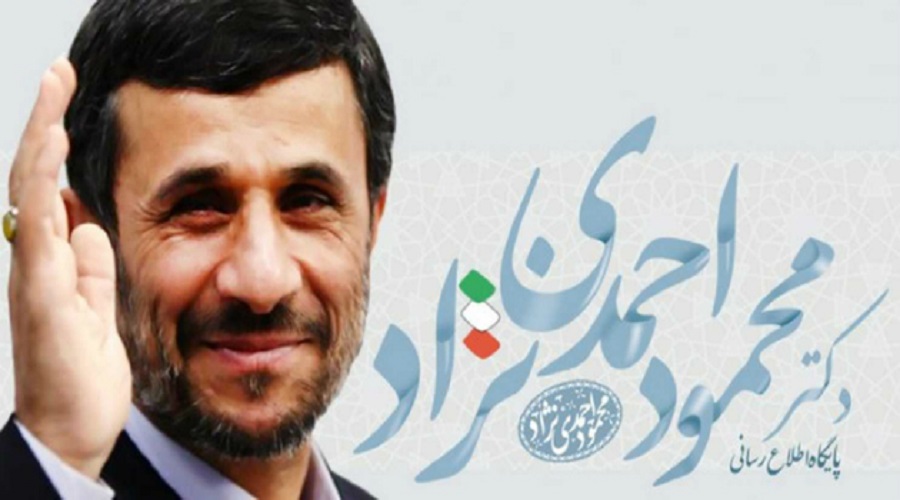The announcement by former Iranian President Mahmoud Ahmadinejad that he will not run in the presidential elections slated for May 2017 indicates that the Iranian regime wants to avoid an internal political crisis similar to that of 2009. This is especially at a time when it is facing strong regional and international pressure. Yet, it appears the regime remains undecided about the upcoming elections: supporting incumbent President Hassan Rouhani to win a second term, or change the rule Iran has applied since 1981 of allowing a new candidate from the conservative fundamentalist camp to win, and dash Rouhani’s ambition to complete his economic and political plan in the coming four years.
Several considerations:
The pressure on Ahmadinejad by many institutions within the Iranian regime not to run may be based on the following:
1. Avoiding a new political crisis. It seems the Iranian regime is trying to avoid repeating the same mistakes it made in 2009, which could trigger unprecedented challenges especially since Ahmadinejad is a symbol of that crisis. His victory of a second presidential term in the 2009 elections triggered domestic protests that caught the eye of the out world, especially after Supreme Guide Ali Khameini intervened in the crisis in favor of Ahmadinejad. Khameini rejected demands by protestors contesting election results, known in the media as the ”Green Movement” led by former Prime Minister Mir-Hussein Mousavi, to re-hold elections or recount votes.
By preventing Ahmadinejad from running, the Iranian regime may be trying to stem new protests after it succeeded in reducing them in recent years, especially after Rouhani – a moderate – won the June 2013 elections. This is significant for the regime because many insiders believe that any new crisis could pose a serious threat to the cohesion of the regime, especially since some international powers – from the perspective of the regime and fundamentalist conservatives – could take advantage of a possible row to overthrow the regime or better penetrate Iranian society, put pressure on the regime and recreate the “Syrian model” in Iran.
2. Continued tensions between the Ahmadinejad’s supporters and the fundamentalist conservatives. The policies of Ahmadinejad heightened tensions in his relations with fundamentalist conservatives as he attempted during his tenure (2005-2013) to exclude from the government and some government agencies those who were loyal to his political rivals. These included figures close to Khameini, who in 2011 was forced to annul a presidential decree dismissing Minister of Intelligence Heydar Moslehi. In response, Ahmadinejad decided to sit at home for ten days in protest of the move before returning to the presidency.
Ahmadinejad sought to promote some figures close to him on the political scene, who had views that were not acceptable to the neo-cons and some senior clerics. These include Esfandiar Rahim Mashaei, his chief of staff who nominated himself in the last presidential elections, but was rejected by the Guardian Council because of many concerns, by the Council and fundamentalist conservatives, about Mashaei’s views especially on the notion promoted by those close to Ahmadinejad about the “imminent return of the Imam”. This essentially means making the position of the Supreme Guide obsolete.
Economic policies by Ahmadinejad’s government increased inflation and unemployment, and devalued the national currency especially after international sanctions against Iran were greatly increased because it continued to develop its nuclear program. Iran reached a deal with the 5+1 Group under Rouhani. There were also many cases of corruption against people close to the former president.
3. Allowing fundamentalist conservatives to realign their ranks. This prepares them better to possibly agree on a consensus candidate to run against Rouhani next year. This current is trying to regain power on elected bodies such as the presidency, parliament and local councils. If Ahmadinejad were to run, this would increase the gap between political forces that belong to this current and possibly lead to preventing consensus on a candidate. This would give Rouhani a good chance at victory once again, after he remarkably defeated four candidates of this current in 2013 after they each refused to withdraw in favor of the other candidates.
Although there are many reports that Khameini put a lot of pressure on Ahmadinejad to withdraw his candidacy, this does not mean the Supreme Guide has decided which candidate he will support. It could be Rouhani, or anyone from the ranks of fundamentalist conservatives such as Parliament Speaker Ali Larijani who succeeded in keeping his post despite the strong gains of moderates in parliamentary elections in February, 2016. It could also be Ezzatollah Zarghami, former chairman of the radio and television corporation, who is reportedly preparing to announce his candidacy in the presidential elections. There is also Mohsen Rezaei, secretary of the Expediency Discernment Council and former commander of the Iranian Revolutionary Guard.
4. Avoiding a clash between the former president and Supreme Guide. It seems Khameini does not want another quarrel with Ahmadinejad, especially during the second term (2009-2013) when he asked for a broader mandate and asserted he reached power through the “votes of the people” unlike some other positions. This is a clear indicator of the row between elected and appointed institutions inside Iran, especially the Supreme Guide establishment and the presidency.
Contrary pairings:
This dispute is especially significant because it touches the very foundations of the Iranian regime, namely combining contrary pairings such as blending consultative and jurist rule, and the elements of a republic (with institutions) and Islamism (a theocracy). These pairings have extended to the political scene which is now divided into conservatives and reformers, and traditional conservatives and fundamentalist conservatives.
In conclusion, Ahmadinejad’s withdrawal from contesting the elections next year could allow for deciding on possible alternative presidential candidates. It also increases the margin for maneuvering by the regime which preferred not to gamble and face a serious political crisis similar to the one in 2009.


